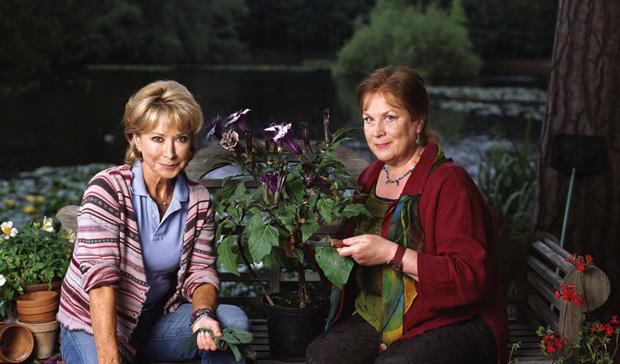Embrace Minimalism: A 30-Day Plan For A Simpler Life

Table of Contents
Week 1: Assessing Your Current Situation and Setting Intentions
Before diving into decluttering, it's crucial to understand your relationship with your belongings and define your minimalist goals. This foundational week sets the stage for your 30-day journey.
Understanding Your Relationship with Possessions
This involves honest self-reflection. Why do you hold onto certain items? What emotional attachments are preventing you from letting go?
- Journaling Exercise: Spend some time journaling about your feelings towards your possessions. Ask yourself: What objects evoke strong emotions? Why? What memories are attached to them? This exercise helps you identify emotional attachments hindering your minimalist journey.
- Clutter Hotspots: Identify the areas in your home where clutter accumulates the most. Is it your closet, your desk, or perhaps the kitchen counters? Pinpointing these problem areas allows for focused decluttering.
- Consumerism's Impact: Reflect on how consumerism influences your life and spending habits. Are you buying things you don't need, driven by marketing or social pressure? Acknowledging this impact is a vital step towards mindful consumption.
Mindful consumption is key to a successful minimalist lifestyle. Instead of impulsive purchases, consider the true value and necessity of each item before buying.
Defining Your Minimalist Goals
Setting clear goals is essential for staying motivated throughout the 30-day plan. Use the SMART framework:
- Specific: What exactly do you want to achieve? (e.g., Declutter my closet, reduce spending by 20%)
- Measurable: How will you track your progress? (e.g., Count the number of items decluttered, track spending using a budgeting app)
- Achievable: Are your goals realistic within the 30-day timeframe?
- Relevant: Are these goals aligned with your overall minimalist aspirations?
- Time-bound: Set a deadline for achieving your goals.
Examples of minimalist goals include: decluttering a specific area like your bedroom, reducing your monthly spending by a certain percentage, or simplifying your morning routine. Creating a vision board or mood board can help visualize your ideal minimalist lifestyle and keep you motivated.
Week 2: Decluttering Your Physical Space
This week focuses on tackling the physical clutter in your home. We'll explore effective strategies to make this process efficient and less overwhelming.
The Power of the 20/20 Rule
The 20/20 rule is a quick and effective decluttering technique:
- Discard items not used in 20 months: If you haven't used something in 20 months, it's likely you don't need it.
- Discard items costing less than $20: Items with low monetary value often hold little sentimental value and can easily be replaced.
- Speed is Key: Make quick decisions to avoid decision fatigue. Don't overthink it; if you're unsure, let it go.
This method streamlines the decluttering process, allowing you to quickly assess and eliminate unnecessary items. Donate, sell, or recycle unwanted items responsibly.
Decluttering Specific Areas
Focus on one area at a time to avoid feeling overwhelmed.
- One Area at a Time: Tackle your closet, then drawers, then kitchen cabinets, etc. Systematic decluttering prevents feeling overwhelmed.
- Decluttering Methods: Use the KonMari method (tidying by category, not location), or other decluttering techniques that resonate with you.
- Before & After: Taking before-and-after photos helps you visualize your progress and boosts motivation.
Remember, decluttering isn't about discarding everything; it's about letting go of what no longer serves you or brings you joy.
Week 3: Minimalism Beyond Possessions
Minimalism extends beyond physical possessions to encompass digital spaces and lifestyle choices. This week explores these crucial aspects.
Digital Minimalism
Digital clutter can be just as overwhelming as physical clutter. Simplify your digital life:
- Social Media Purge: Unfollow accounts that don't add value to your life.
- App Detox: Delete unused apps from your phone and computer.
- Digital Organization: Organize your files, photos, and emails.
- Screen Time Limits: Set limits on your screen time to reduce digital distractions.
Digital minimalism reduces stress and improves focus by limiting digital distractions.
Minimalist Lifestyle Choices
Integrate minimalist principles into your daily routines and habits:
- Simplify Routines: Streamline your daily schedule, focusing on essential tasks.
- Conscious Shopping: Shop intentionally, considering needs over wants.
- Saying "No": Learn to decline commitments that don't align with your priorities.
- Mindful Practices: Explore meditation, yoga, or other mindfulness techniques to enhance your well-being.
Minimalist lifestyle choices create more time, reduce stress, and increase your overall sense of well-being.
Week 4: Maintaining Your Minimalist Lifestyle
This final week focuses on establishing sustainable habits and enjoying the benefits of a minimalist lifestyle.
Creating Sustainable Habits
To maintain your minimalist lifestyle long-term, incorporate these habits:
- One In, One Out: For every new item you bring into your home, discard a similar item.
- Regular Decluttering: Regularly declutter small areas to prevent clutter buildup.
- Practice Gratitude: Appreciate what you have, rather than focusing on what you lack.
- Capsule Wardrobe: Create a small, versatile wardrobe with clothing items you love and wear regularly.
Sustainable habits ensure that your minimalist lifestyle becomes a way of life, not a temporary phase.
The Benefits of Minimalism
Minimalism offers numerous advantages:
- Reduced Stress and Anxiety: Less clutter leads to a calmer mind.
- Increased Focus and Productivity: A clutter-free environment improves concentration.
- More Time and Freedom: Less time spent cleaning and organizing means more time for what matters.
- Improved Mental Clarity: Minimalism helps reduce mental overload.
- Enhanced Financial Well-being: Less spending leads to better financial health.
Embracing minimalism is a journey, not a destination. This 30-day plan provides a framework for simplifying your life and achieving a more intentional existence. By consistently applying these strategies, you can create a space that fosters calm, clarity, and contentment. Remember, minimalism isn't about deprivation; it's about prioritizing what truly matters. Start your minimalist journey today and discover the freedom that comes with living with less! Begin your journey to minimalism now and experience the transformative power of a simpler life. Learn more about minimalist living and find resources to help you maintain your minimalistic lifestyle.

Featured Posts
-
 Wildfire Smoke From Canada Severe Air Quality Impact On Minnesota
May 31, 2025
Wildfire Smoke From Canada Severe Air Quality Impact On Minnesota
May 31, 2025 -
 Rosemary And Thyme A Guide For Home Gardeners
May 31, 2025
Rosemary And Thyme A Guide For Home Gardeners
May 31, 2025 -
 Nyt Mini Crossword March 31 2025 Hints And Answers
May 31, 2025
Nyt Mini Crossword March 31 2025 Hints And Answers
May 31, 2025 -
 Mlb Roll Call Chase Lee Pitches Scoreless Inning In Return May 12 2025
May 31, 2025
Mlb Roll Call Chase Lee Pitches Scoreless Inning In Return May 12 2025
May 31, 2025 -
 High Fentanyl Levels Found In Princes System A Look Back At March 26th
May 31, 2025
High Fentanyl Levels Found In Princes System A Look Back At March 26th
May 31, 2025
